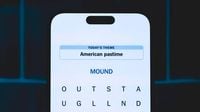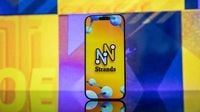For many puzzle enthusiasts, Saturday mornings come with a ritual: a cup of coffee, a quiet moment, and a fresh challenge from The New York Times’ ever-expanding collection of word games. On October 4, 2025, fans of the NYT’s latest brain-teaser, Strands, were greeted with a theme that evoked wanderlust and nostalgia—"Bring it home." The puzzle, as reported by multiple outlets including The Economic Times, Mashable, and CNET, asked solvers to identify items often collected as mementos from travel adventures. For those who needed a nudge, hints and answers were widely shared, helping both seasoned solvers and newcomers alike to crack the code.
Strands, still technically in beta, is the New York Times’ twist on the classic word search. Unlike its predecessors such as Wordle or Connections, Strands requires players to find a set of themed words in a six-by-eight grid, with each letter being part of an answer. What sets it apart, though, is the presence of a "spangram"—a special word that stretches across the board, linking two opposite sides and encapsulating the puzzle’s theme. According to Mashable, "words can be made from linked letters—up, down, left, right, or diagonal, but words can also change direction, resulting in quirky shapes and patterns." It’s a game that rewards both lateral thinking and a sharp eye for patterns.
On this particular Saturday, the theme "Bring it home" was explained by Beebom as "Token of remembrance from travel trips," while Parade described it as "Tourist treasures." The spangram for the day, running horizontally from left to right, was SOUVENIRS—a word that instantly conjures up images of airport gift shops and bustling market stalls. The theme words hidden throughout the grid were SPOON, SHIRT, JEWELRY, MAGNET, KEYCHAIN, and POSTCARD. Each of these, as any traveler knows, is a classic keepsake, whether it’s a T-shirt from a music festival, a magnet for the fridge, or a keychain with a city skyline.
For those unfamiliar with the mechanics, Strands is more than just a hunt for random words. As Parade laid out, "Find theme words to fill the board. Theme words stay highlighted in blue when found. Drag or tap letters to create words. If tapping, double-tap the last letter to submit. Theme words fill the board entirely. No theme words overlap." The spangram, highlighted in yellow, acts as a linchpin, often providing crucial letters to unlock the rest of the puzzle. On October 4, identifying SOUVENIRS early was not just a clever move—it was practically a necessity. As The Economic Times noted, "Successfully identifying the Spangram helps players deduce other theme words, as it often contains letters used in multiple positions across the puzzle."
Hints for the day were plentiful, both in-game and across the internet. CNET offered the clue "Tourist purchases," while Mashable simply wrote, "The words are related to traveling." The general consensus? This was a puzzle for globetrotters and collectors alike. Beebom even rated the difficulty as a 1 out of 5—a gentle entry point for puzzle solvers of all stripes. Still, as some writers confessed, the answers weren’t always immediately apparent. One CNET contributor admitted, "It took me a while to see the theme—it just seemed like a batch of random nouns. Also, some of the answers are a bit tough to unscramble."
For those stuck, the game offers a helping hand. As Parade explained, "Need a hint? Find non-theme words to get hints. For every three non-theme words you find, you earn a hint. Hints show the letters of a theme word." This mechanic encourages a bit of creative exploration, rewarding players for thinking outside the box even when they’re not sure about the theme words themselves. And while the number of theme words can vary from puzzle to puzzle, on this day there were seven, including the spangram SOUVENIRS.
Beyond the answers themselves, the Strands puzzle on October 4 offered a glimpse into the culture of collecting. Why do people bring home souvenirs? For some, it’s about preserving a memory—a tangible reminder of a fleeting moment in a faraway place. For others, it’s about sharing their travels with friends and family, or simply adding another magnet to an already crowded fridge. As one writer for Forbes mused, "Do people bring home jewelry and…spoons as souvenirs? There are souvenir spoons? I mean I guess I’ll take your word for it." It’s a lighthearted nod to the quirky, sometimes inexplicable habits of travelers everywhere.
Of course, Strands is just one piece of The New York Times’ growing puzzle empire. Alongside Wordle, Connections, and the Mini Crossword, it’s become part of a daily routine for millions. The game’s editor, Tracy Bennett, has promised to keep things interesting, occasionally throwing solvers a curveball. As Forbes quoted the Times, "Just as she varies the difficulty of Wordle puzzles within a week, [Bennett] plans to throw Strands solvers curveballs every once in a while." But on October 4, at least, the challenge was more of a gentle jog than a marathon.
For those seeking tips, the advice was consistent across sources. Beebom suggested starting at the corners of the grid, using hints wisely, and thinking both literally and figuratively. Prioritizing the spangram is a tried-and-true strategy, as its letters often intersect with multiple theme words. And if all else fails, there’s always the option to look up the answers—though, as any true puzzle fan knows, the real satisfaction comes from that "aha" moment when everything clicks.
So, what did October 4’s Strands teach its solvers? Perhaps that the things we bring home from our travels—be they spoons, shirts, or postcards—are more than just objects. They’re stories, memories, and connections to places we may never visit again. And sometimes, the joy of solving a puzzle is as much about the journey as the destination.



